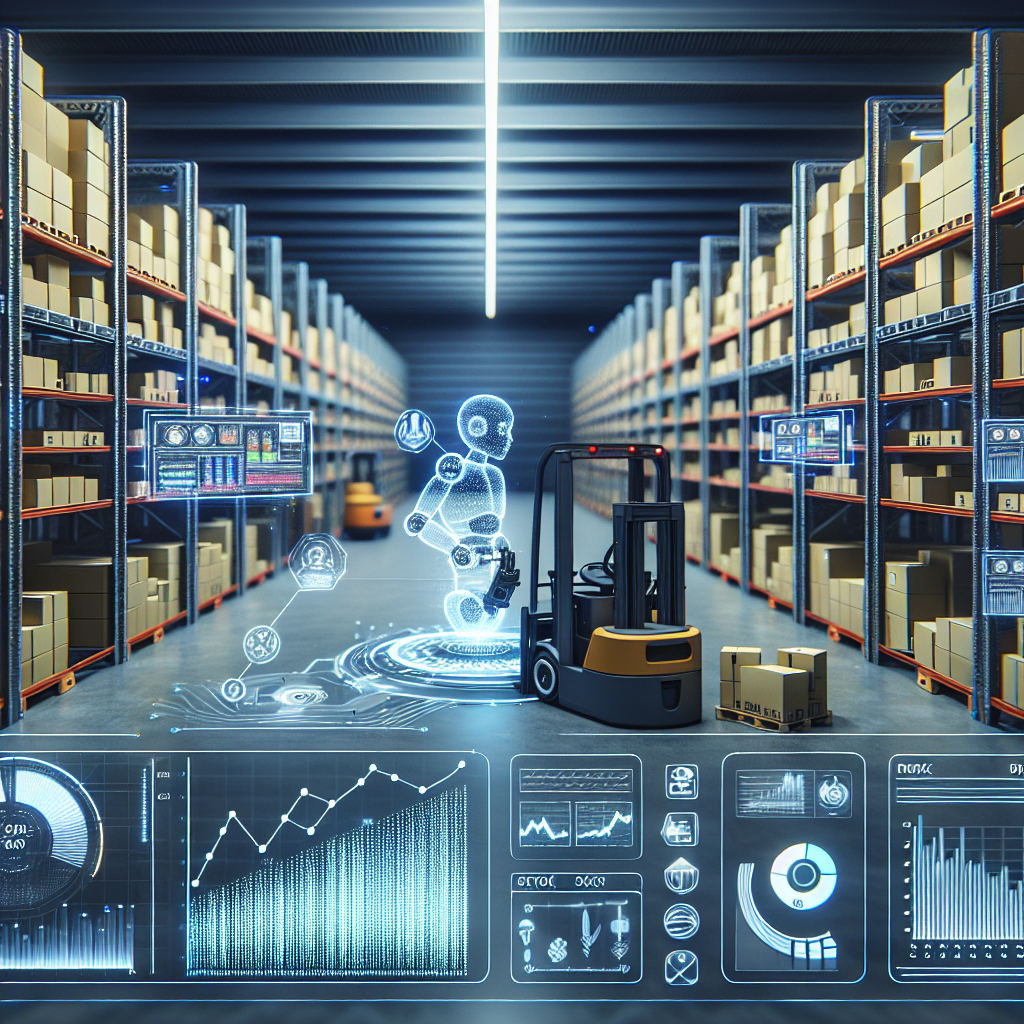In today’s fast-paced and globalized world, managing inventory and forecasting demand in logistics is becoming increasingly complex. Companies are dealing with a growing number of SKUs, fluctuating customer demands, and supply chain disruptions. To address these challenges, many organizations are turning to artificial intelligence (AI) solutions to improve their inventory management and demand forecasting processes.
AI solutions have the ability to analyze vast amounts of data in real-time and provide actionable insights to optimize inventory levels, reduce stockouts, and improve customer satisfaction. By leveraging machine learning algorithms, companies can better predict demand patterns, identify trends, and make more informed decisions about inventory planning and replenishment.
There are several key ways in which AI is revolutionizing inventory management and demand forecasting in logistics:
1. Demand Forecasting: AI algorithms can analyze historical sales data, market trends, social media signals, and other relevant factors to predict future demand with greater accuracy. By incorporating external data sources, such as weather patterns or economic indicators, AI can generate more reliable forecasts and help companies anticipate and respond to changes in customer behavior.
2. Dynamic Pricing: AI-powered pricing algorithms can adjust prices in real-time based on demand, competition, and other market dynamics. By using machine learning to optimize pricing strategies, companies can maximize revenue and profitability while still meeting customer expectations.
3. Inventory Optimization: AI solutions can help companies determine the optimal inventory levels for each SKU by considering factors such as lead times, demand variability, and service levels. By automating the replenishment process and adjusting inventory levels dynamically, companies can reduce excess stock, minimize stockouts, and improve overall supply chain efficiency.
4. Supply Chain Visibility: AI technologies can provide real-time visibility into the entire supply chain, allowing companies to track shipments, monitor inventory levels, and identify potential bottlenecks or disruptions. By leveraging AI-powered analytics, companies can proactively address issues and make timely decisions to ensure smooth operations and on-time deliveries.
5. Warehouse Automation: AI-powered robots and drones are increasingly being used in warehouses to automate tasks such as picking, packing, and sorting. By streamlining these processes and increasing efficiency, companies can reduce labor costs, improve accuracy, and enhance overall warehouse operations.
While AI solutions offer numerous benefits for inventory management and demand forecasting in logistics, there are also challenges and considerations that companies need to address:
1. Data Quality: AI algorithms rely on high-quality data to generate accurate predictions and recommendations. Companies need to ensure that their data is clean, up-to-date, and relevant to avoid biases or inaccuracies in the AI models.
2. Implementation Costs: Implementing AI solutions can require significant upfront investments in technology, infrastructure, and training. Companies need to carefully evaluate the costs and benefits of AI adoption and develop a clear roadmap for implementation.
3. Change Management: Adopting AI technologies often requires changes in processes, workflows, and organizational culture. Companies need to educate employees, provide training, and support them in adapting to new ways of working to maximize the benefits of AI solutions.
4. Security and Privacy: AI technologies collect and analyze large amounts of sensitive data, raising concerns about data security and privacy. Companies need to implement robust cybersecurity measures, comply with regulations such as GDPR, and ensure that data is protected throughout the AI lifecycle.
Despite these challenges, the potential benefits of AI solutions for inventory management and demand forecasting in logistics are substantial. By leveraging AI technologies to optimize inventory levels, predict demand patterns, and improve supply chain visibility, companies can gain a competitive edge, reduce costs, and enhance customer satisfaction.
FAQs:
Q: How can AI help companies improve demand forecasting accuracy?
A: AI algorithms can analyze vast amounts of data, including historical sales data, market trends, and external factors, to generate more accurate demand forecasts. By leveraging machine learning and predictive analytics, companies can better predict customer behavior and adjust inventory levels accordingly.
Q: What are the key benefits of using AI for inventory management?
A: AI solutions can help companies optimize inventory levels, reduce stockouts, improve supply chain efficiency, and enhance overall operational performance. By automating tasks, predicting demand patterns, and providing real-time insights, AI can drive cost savings, increase revenue, and improve customer satisfaction.
Q: How can companies ensure the success of AI implementation in inventory management?
A: Companies should start by defining clear objectives, assessing their data quality, and developing a roadmap for AI adoption. They should also invest in training, change management, and cybersecurity measures to ensure a smooth transition and maximize the benefits of AI solutions.

